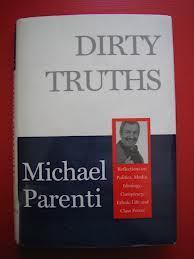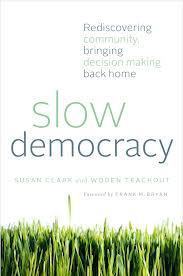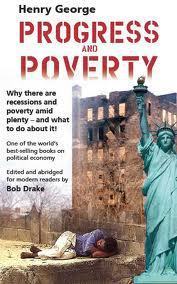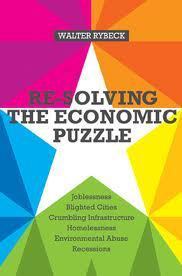Stuart Jeanne Bramhall's Blog: The Most Revolutionary Act , page 1375
December 21, 2013
Republicans Veer Towards Socialism
Obama Tries to Privatize TVA
According to a recent article by Gar Alperowitz, Obama has inserted a proposal to sell the Tennessee Valley Authority (TVA) in his 2014 budget. The TVA was established by Franklin D Roosevelt during the Depression. The largest public power provider in the US, it employs more than 12,500 people and provides educational, training and other services (such as navigation and land management, flood control, and economic development) in the Tennessee River basin. This region encompasses seven states: Tennessee, Kentucky, Virginia, South Caroline, Georgia, Alabama and Mississippi.
Alperowitz finds it ironic that the most vehement opposition comes from free market Republicans:
Sen Lamar Alexander (R Tennessee) – fears higher energy costs for his constituents, “one more bad idea in a budget full of bad ideas.”
Rep John L. Duncan, Jr. (R-Tennessee) – “something that has been proposed in the past and been determined to be a very bad idea.”
Sen Richard Shelby (R-Alabama – will “carefully study any proposals to restructure TVA” in order to make sure that it won’t result in a price hike.
Sen Bob Corker (R-Tenn) – “I doubt this idea gains much traction.”
Weird isn’t? Republicans are supposed to take the line that Big Government is Socialism and Bad. When they advocate privatization of schools, prisons, Medicare, Medicaid and Social Security, they tell us that the free market reduces costs by introducing competition. There appears to be a big discrepancy between theory and reality. The experience with utilities, at least, is that privatization increases the costs to the consumer – in addition to operating costs, privately run utilities are obliged to cover profits, advertising and CEO salaries.
Republican lawmakers in states served by the TVA are well aware that it’s an extremely popular federal agency, mainly because it sells power at much lower prices than private power companies. An analysis by the U.S. Energy Information Administration found that consumers in Alabama and Tennessee pay considerably less for electricity than the national average.
Alperovitz concludes his article by pointing out that “socialist” municipally and regionally owned power companies – more than 2,000 in all – can be found in every single state in the US. Like the TVA, they are all immensely popular, even in conservative rural areas. Public ownership of vital transportation facilities (such as roads, ports and airports) is also extremely common. Moreover approximately a third of the nation’s total land surface (and the minerals beneath and forests above) is owned and managed by the government.
So why, Alperowitz asks, is a Democratic president proposing to increase power rates for millions of customers by privatizing the TVA? His answer is much kinder than mine would be. Read more here.
photo credit: Pete Zarria via photopin cc
Reposted from Veterans Today


December 20, 2013
Dirty Truths
Dirty Truths
by Michael Parenti (City Lights Books, 1996)
Book Review
Nearly 17 years old, Michael Parenti’s 1996 Dirty Truths offers an analysis of the national security state that props up monopoly capitalism which is largely missing from scholarly “leftist” literature.
Parenti is one of the few theoretical Marxists to formally acknowledge the impeccable scholarship of Sylvia Meagher, Mark Lane, Carl Oglesby, Peter Dale Scott, and others in uncovering the role of the national security state in John Kennedy’s murder. Noam Chomsky, Alexander Cockburn, the Nation and other high profile mouthpieces for the American left are all highly critical of leftists who subscribe to so-called “conspiracy theory.” In addition to eye opening chapters on the JFK assassination and the apparent 1970 assassination of labor leader Walter Reuther, Dirty Truths also features an excellent chapter on the bloody US-supported coup Russian president Boris Yeltsin carried out in 1992.
“Selective Fascism”
Most of Dirty Truths is dated and of mainly historical interest. In his introductory chapters, Parenti, a PhD historian whose anti-Vietnam activism ended his teaching career, offers a Marixian analysis of the structural origin of poverty, corporate media censorship, and American military empire that are now taken as a given by most liberal intellectuals. Yet already in 1996, Parenti writes at length about the fascist nature of the national security state and its role as an all-powerful shadow government. Like Chomsky and other media analysts, Parenti believes the modern state mainly uses propaganda and brainwashing to prevent the working class from agitating for social justice. However when ideological control fails, it freely indulges in a a “selective fascism” of unrestrained violence, particularly against minority communities.
According to Parenti, most Americans fail to recognize the fascist nature of the national security state because the corporate media sugarcoats the militaristic violence and brutality that has crept into community policing.
Yeltsin’s 1992 Coup
His chapter on Yeltsin’s 1992 coup casts a whole new light on the break-up of the Soviet Union. In 1992, the corporate media glorified Boris Yeltsin as a hero of democracy when he behaved exactly like the puppet dictators the US props up in the Middle East. After ordering Russian troops to shell the parliament building (while the Russian Parliament still in session) and killing upwards of 1,000 people, he officially disbanded both Parliament and the constitutional court, nullified the new Russian constitution, banned labor unions, jailed all the opposition leaders, abolished city and regional councils and outlawed fifteen political parties. He took these actions when a parliamentary majority voted down some of the “market reforms” Wall Street and the IMF were trying to impose on Russia.
Once Yeltsin had a free hand to end price controls and sell off the state-owned industries (to foreigners and Russian gangsters), the result was an economic disaster that transformed Russia into a 3rd world sweatshop for US investment. The rampant inflation turned the Russian people into instant paupers. This, along with the collapse of the health care system, led to mass starvation and epidemics of typhoid, TB that reduced Russian life expectancy by an average of twenty years.
The JFK Assassination and the Gangster State
Parenti’s discussion of the conspiracy to murder John Kennedy fits neatly into his analysis of the national security state as a large unaccountable state power with a primary purpose of protecting the ruling elite. Any individual or group who poses a serious threat to the corporate elite is automatically subject to neutralization in the form of illicit surveillance, sabotage, infiltration, false arrest, tax harassment, and violence and assassination. I suspect Parenti’s depth of knowledge relates in part to personal experiences as an anti-Vietnam War activist, which he describes at the end of the book. It’s also a matter of public record that the CIA, FBI and other intelligence agencies enlist the services of mobsters, drug traffickers, and assassins to target peasants, intellectuals, clergy, student and labor leaders and community activities who threaten US financial interests, both overseas and domestically.
Parenti devotes most of this chapter to Oswald’s role as a low level intelligence operative (and patsy) and the aggressive role corporate media has played in suppressing volumes of documentary and research evidence linking the assassination to the national security state.
He’s also highly critical of what he describes as a “conspiracy phobia” on the part of Chomsky, Cockburn, the Nation and other high-profile leftist and progressive publications. He includes excerpts of his lengthy correspondence with Chomsky, highlighting the illogic of the MIT linguist’s principle arguments against serious consideration of the assassination literature: 1) studying conspiracies (supposedly) “distracts” activists from focusing on the structural problems of capitalism, 2) the US government (supposedly) had no reason to assassinate the Kennedy brothers because they were both cold warriors and mainly acted in the interests of the ruling elite, and 3) focusing on assassinations (supposedly) leads activists to idealize the Kennedys and overlook their shortcomings.
Parenti also notes that Chomsky and Cockburn both condemn the meticulous and extensive work of Sylvia Meagher, Mark Lane, Carl Oglesby, Peter Dale Scott, and other scholars without ever reading any of it.
Free from the Open Library
I borrowed Dirty Truths from the Open Library. Following registration, borrowers can download a PDF or Epub version of a large selection of books. All have a two week due date and vanish from your hard drive two weeks after you borrow them.


December 19, 2013
Obama Quietly Legalizes Marijuana
Justice Department Agrees Not to Challenge State Marijuana Laws
According to Yahoo News, the Obama administration quietly legalized marijuana use in September – at least in states with medical and recreational marijuana laws.
In an abrupt about face, Deputy Attorney General James Cole notified all 94 U.S. attorneys’ offices that states with recreational and medical marijuana laws can now let people use it, grow it under license, and purchase it from retail facilities — so long as possession is prohibited in minors and it doesn’t end up on federal property or in the hands of gangs and criminal enterprises. Other high priority enforcement areas include prevention of drugged driving, the use of state-authorized marijuana activity as a cover for trafficking other illegal drugs, and the use of firearms in marijuana cultivation or distribution.
The memo elaborated that all states legalizing marijuana will be expected to enact rigorous regulatory regimes. If they fail to do so, the Justice Department will respond by challenging their regulatory structure, rather than prosecuting marijuana users – as they have done in the past.
A great victory for states rights, the move will boost legalization initiatives in states where marijuana is still illegal. Possession remains a felony offense in only 16 states. In the other 34 states, marijuana use has either been decriminalized or reduced to a misdemeanor. In Washington and Colorado, both possession and sales became legal (by voter initiative) last November.
photo credit: eggrole via photopin cc
Reposted from Veterans Today


December 18, 2013
Deliberative Democracy
Slow Democracy: Rediscovering Community, Bringing Decision Making Back Home
by Susan Clark and Woden Teachout
Book Review
Slow Democracy is about a process known as “deliberative democracy.” This is a type of direct democracy in which community members play a genuine role in local governance decisions.
The book is mainly about the growing number of communities (in New York, Chicago, Washington State, Oregon, Maine, Gloucester Massachusetts, Boulder Colorado, Austin Texas, Canada, India, Eastern Europe, Australia) that have incorporated deliberative community meetings into decisions involving planning, governance, and budgeting. In the US, the 2008 global meltdown has led to ongoing state and municipal budget deficits. Cutting services is always unpopular. Thus there is strong motivation for local officials to involve the community in tough budgeting decisions.
Clark and Teachout see three alarming trends occurring in industrial society. Both public resources and governance decisions are moving towards increasing centralization and privatization. Increasingly private corporations usurp resources that rightfully belong to the public, while simultaneously making governance decisions that used to be made by elected officials. Meanwhile the public response to the corporate takeover of society has been apathy and disengagement from public life.
The authors see the deliberative democracy movement as the ideal prescription to counteract these destructive trends. The process goes by different names in different areas – study circles, charettes, meetings in a box, Who Decides, Portsmouth Listens, Living Room Conversations. Yet all seem to operate by the same underlying principle: a commitment to identify potential solutions to community problems through a public process based on good information and respectful relationships.
The New England Town Hall Meeting
Clark and Teachout begin their book with a description of the New England town hall meeting, in which residents themselves serve as the legislative branch of government. Hundreds of towns in six New England states still govern themselves via town meetings, as they have done since pre-revolutionary times. This type of direct democracy was hard to transplant to the sparsely populated settlements of the Wild West, though it was revived briefly in the Populist and Progressive movements of the late 19th century. Outside of New England it virtually vanished with the massive expansion of federal government that occurred with the New Deal, World War II, and the Cold War. Between 1945 and 1990, hundreds of thousands of federal, state, and municipal workers gradually took over decisions that were previously made in public meetings.
Slow Democracy’s Track Record
The most dramatic success Clark and Teachout describe is when the residents of Gloucester Massachusetts ousted Suez, the French multinational that ran their water supply, and galvanized the community to start their own water company. Through a similar process, the residents of Boulder Colorado replaced coal-based Xcel Energy with their own renewables-based electric company. Slow Democracy also describes the multiple successes of the local sovereignty movement, in which the Community Environmental Legal Defense Fund has helped communities in the Northeast and on the West Coast pass ordinances banning hog farms, toxic sludge, fracking, GE crops, and aquifer depletion for bottled water plants.
Cultural Cognition
For me the most valuable chapter was about the Yale Law School Cultural Cognition Project (See earlier post Are Right-Left Labels Obsolete?) and other tools to enhance effective deliberation among groups with opposing political views. The authors begin by dispelling the myth that the US is hopelessly split into left-right ideologues. In 2007 the Cultural Cognition Project interviewed a random sample of 5,000 Americans. As predicted, the interviewees didn’t self-select into neat left-right or liberal-conservative camps. Instead their core beliefs could be plotted on a two dimensional grid depending on their views about hierarchical authority vs egalitarianism and individualism vs collective responsibility. The study results are available at Cultural Cognition Project.
It turns out that living in the same community causes residents to share many of the same concerns, despite profound differences in their worldview. Clark and Teachout give examples of successful community conversations between groups with opposing views on climate change, the Israel-Palestine conflict and abortion. All were successful in finding some areas of agreement, while simultaneously discovering the media was playing a major role in fanning the clash between them.
The book includes valuable appendices on ground rules for local officials and ordinary citizens seeking to set up effective “study circles,” as well as organizations willing to help facilitate the process and publications offering additional tools.
Originally published in Dissident Voice


December 17, 2013
Spying on Americans: the Ugly History

The Origins of the US Police State
While the majority of Americans were stunned and outraged at Edward Snowden’s revelations that the government was secretly monitoring their phone calls and emails, the US government has been systematically spying on law abiding citizens for nearly 100 years. In July 2013, University of Wisconsin professor Alfred McCoy, one of America’s foremost experts on CIA narcotics trafficking, laid out an elegant history of government domestic spying in Tomgram: Obama’s Expanding Surveillance Universe. It should be required reading for every high school graduate. Below are some highlights:
1898 -1901 US Occupation of the Philippines
The US Army first developed the capacity to spy and keep records on civilians when they occupied the Philippines (following the Spanish American War) in 1898. n when they occupied the Philippines following the Spanish American War. The local population already had a large, well-organized resistance movement which had been battling Spain for independence. In 1901, as director of the army’s first field intelligence unit, Captain Ralph Van Deman, compiled detailed personal and financial records on thousands of Filipino leaders.
1917 – 1921 World War I and the Palmer Raids
After the US entered World War I in 1917, President Woodrow Wilson engaged Van Deman to create the US Army’s Military Intelligence Division to spy on US civilians. Van Deman, in turn, enlisted a patriotic vigilante group called the American Protective League to assist in collecting a million pages of surveillance reports on Americans of German ancestry (like my grandfather and great grandfather, who was forced to flee to South America).
After the war ended in 1918 they joined with the Bureau of Investigation (renamed the FBI in 1935) to engage in strike breaking in the Northeast and Pacific Northwest and round up and deport European labor activists.
In 1921, incoming president Warren Harding condemned Wilson’s oppressive secret police apparatus and forced the Army and FBI to cut their ties with vigilante groups. Although Van Deman was forced into retirement, he and his wife continued to compile files on 250,000 so-called subversives.
1940 – 1945 World War II
In 1940, Hoover made use of Van Deman’s files and a network of 300,000 informants to carry out illegal FBI wiretaps, break-ins, and mail intercepts against political dissidents – based on allegations, which were never substantiated, that they posed a threat against wartime defense plants were never substantiated.
1960-74 Vietnam War and COINTELPRO
From 1960-74, Hoover expanded this operation, which he renamed COINTELPRO. As well as spying on activists, this operation also subjected them to extensive personal harassment. According to the senateChurch Committee investigating COINTELPRO, Hoover’s vicious tactics included “anonymous attempts to break up marriages, disrupt meetings, ostracize persons from their professions, and provoke target groups into rivalries that might results in deaths.” As most activists over fifty can tell you, COINTELPRO never ended. I write about my personal encounter with the 1980s version of COINTELPRO in my 2010 memoir The Most Revolutionary Act: Memoir of an American Refugee.
In 1974, New York Times reporter Seymour Hersh revealed that the CIA, which is forbidden under federal law to operate on US territory, was also engaged in illegal surveillance of antiwar activists under a program known as Operation Chaos. Following his election in 1978, President Jimmy Carter pushed for enactment of the Foreign Intelligence Surveillance Act (FISA). This made government wiretaps illegal unless they were approved by a special FISA court.
2003 – 2008 US Occupation of Afghanistan and Iraq (under Bush)
By the time the US attacked Afghanistan and Iraq in 2003-2003, the intelligence security state had a vast array of new spying technologies (including electronic surveillance, biometric identification, and spy drones) at their disposal. In an attempt to bring the Iraqi resistance under control, General McChrystal ordered the collection of 3 million Iraqi fingerprints and iris scans.
Meanwhile Bush attempted to resurrect Hoover’s old vigilante networks via Operation Tips, which was blocked by major opposition from Congress, civil libertarians, and the media. A parallel initiative called Total Information Awareness, which would have compiled electronic files on millions of Americans, was also banned by Congress.
Despite these setbacks, Bush’s defiance of FISA by ordering the NSA to commence collecting email and phone records of American civilians (exposed by the New York Times in 2005) was retroactively ratified by Congress in 2007.
2009 – present US Occupation of Afghanistan , Iraq , Pakistan , Yemen , Pakistan , Syria, and Somalia
Obama substantially expanded NSA spying by collaborating with British intelligence to tap into trans-Atlantic cables carrying phone and email traffic and authorizing NSA spying on residents in NATO ally countries Germany, France, and Italy.
Between 2006-10 the US launched the planet’s first cyberwar. In 2010 Obama ordered cyberattacks (Stuxnet) against Iran’s nuclear facility.
Obama’s Vision for Future Surveillance
According to McCoy, since 2012 Obama has been cutting conventional armaments and investing billions in global information control and space warfare technology. New programs include a National Geospatial-Intelligence Agency with 6,000 employees coordinating surveillance data from predator drones, Reapers, U-2 spy planes, Global Hawks, X-37B space drones, Google Earth, Space Surveillance Telescopes, and orbiting satellite. Alongside their surveillance capabilities, new generation spy satellites will have the capability of enveloping the Earth in an electronic grid capable of pulverizing suspected terrorists or entire armies.
Hear Jeff Blankfort interview McCoy about his Tomdispatch article at Radio 4
photo credit: KAZVorpal via photopin cc
Reposted from Veterans Today


December 16, 2013
Progress and Poverty: the Suppressed Economics Classic
By Henry George (1879), edited and abridged by Bob Drake, Robert Shalkenbach Foundation (2006)
Book Review
Progress and Poverty is an economic classic which has been suppressed in the US owing to its subject matter: the elimination of poverty and economic inequality by restoring The Commons. Written over 130 years ago, the book provides uncanny insights for the current difficulties capitalism faces (i.e paralyzing recession, massive public and personal debt and growing income inequality). Internationally George’s economic theories are regarded as comparable to those of Marx, Keynes and Galbraith. Yet despite being the third most famous American in 1879 (after Edison and Mark Twain), George’s work remains largely unknown outside of Australia, New Zealand, Hong Kong and Taiwan.
Why Development Always Produces Poverty
George’s goal in writing Progress and Poverty is to explain, in economic terms, why material progress (i.e. economic development) is always accompanied by poverty and increasing inequality. Employing Adam Smith’s classical definitions of labor, capitol, wages and interest and Ricardo’s Law of Rent, he argues that development must always produce poverty and inequality so long as a privileged elite holds an exclusive monopoly on the ownership of land and basic resources. He starts from the premise that land and natural resources are the source of all wealth, though wealth itself can only be created through human labor. According to George, the relative monopoly the elite hold on land allows them to capture all increases in productivity and production as “rent” increases. He gives numerous historical examples demonstrating that the massive increase in land value and rent that accompanies development always come at the expense of workers. In fact increases in productivity almost always result in a relative decrease, rather than increase, in wages
Maybe Capitalism Isn’t the Only Problem
The book also makes an extremely eloquent case that boom and bust cycles (e.g. our current “recession”) aren’t the inevitable result of capitalism itself but of land privatization. Again with examples, George demonstrates how the monopoly the rich hold on land and resources allows them to engage in speculation by holding them out of production to increase their value. This, in turn, creates the speculative bubbles which cause episodes of “industrial paralysis” when they burst.
The History of Land Privatization
George’s approach is relatively unique for political economists in his emphasis on the role ideology plays in the economic theories that gain popular acceptance. In contemporary society, no one questions the right of a privileged elite to monopolize land and natural resources for their own benefit. However private land (and resource) ownership is a relatively new concept originating in seventeenth century Britain with The Enclosure Act.
About a third of Progress and Poverty traces the historical evolution of private land ownership. In all human societies, the common right of all people to use the earth to support themselves has been sacrosanct. The concept of individual land ownership only emerged as societies advanced and either concentrated power in privileged classes or seized land and slaves through military conquest. Prior to the rise of Greek and Roman civilization, all land was communally owned and the notion of an individual claiming a patch of land as his exclusive possession was unthinkable.
Henry George sees the mass seizure of land by the nobility (in Rome this was referred to as the latifundia) as responsible for the death of democracy in these early societies and the ultimate collapse of both civilizations. In the case of Rome, he points to the inherent advantage German barbarians had as part of a system in which every family was entitled to a share of common land. In George’s view, this egalitarianism translated into character strengths of initiative, creativity and flexibility that made it possible for small bands of individuals to overrun the once great Roman Empire.
After the Roman Empire fell, feudalism was characterized by systems of communal and exclusively private property rights that operated in parallel. A feudal estate was considered to belong to society at large. The king, as the chief representative of the people, merely granted its use in trust to church leaders and military officers in return for services rendered to the commonwealth. Churches were expected to provide for the care and welfare of the sick and poor. For their part, feudal lords were expected to defend the king’s military interests. As of 1879, France still held almost ten million acres of communal land. Moreover despite enclosing (privatizing) over eight millions acres between 1710 and 1879, at the time Progress and Poverty was written, England still maintained two millions acres as commons (though most was unsuited for agriculture).
Because they allowed the British system of private land ownership to persist in the US, George accuses the founding fathers of failing in their efforts to establish a true republic. Despite abolishing heredity titles and establishing the right to vote, they failed to reestablish the communal property rights that enabled the Greek and Roman democracies to flourish. He contends that political equality, when coexisting with wealth inequality, must always lead to either dictatorship or anarchy. He also highlights the steady social decay (crime, insanity and increasing prison populations) that always accompanies increasing income inequality.
Restoring The Commons Through a Land Tax
George proposes that the wealth inequality, recessions and numerous other evils commonly attributed to the capitalist economic model could be totally eliminated by restoring public ownership of land and resources.
Rather than advocating outright government seizure of private land, he proposes to accomplish this by imposing a tax on unimproved land roughly equivalent to its rental value. Such a system would allow landholders to preserve their right of tenure, while discouraging them from speculating by holding land and resources out of production. While ending land speculation and recessions, this type of tax would simultaneously expand land and resource access for workers and capital investment. Any productivity increases (beyond interest on capital), would accrue to the government, rather than private landholders.
With this approach, everyone whose interest as a worker or investor exceeds their monopoly on land would also experience direct gains. Employers would be forced to increase wages because workers would have easy access to land and self-employment opportunities. Workers, in turn, would no longer fear the technological advances (e.g. automation) that increase productivity as they would share directly in the rewards.
According to George, the government could use revenue from land and resource taxes to abolish taxes on wages and capital (which discourage production) and to pay down debt without resorting to punitive austerity cuts.


Are Right-Left Labels Obsolete?
 Many activists are starting to reject traditional liberal-conservative and left-right labels as overused and meaningless. Susan Clark and Wooden Teachout, writing in Slow Democracy (Chelsea Green Publishing 2012), seem to agree. One of the most valuable chapters in their book discusses the Cultural Cognition Project at Yale Law School. In their 2006-2007 Risk and Culture Study, the project conducted in-depth interviews with a random sample of 5,000 Americans. Guess what? The interviewees didn’t self-select into neat left-right or liberal-conservative camps. Instead their core beliefs could be plotted on a two dimensional grid based on attitudes towards hierarchical authority vs egalitarianism and individualism vs collective responsibility. The study results are available at Cultural Cognition Project
Many activists are starting to reject traditional liberal-conservative and left-right labels as overused and meaningless. Susan Clark and Wooden Teachout, writing in Slow Democracy (Chelsea Green Publishing 2012), seem to agree. One of the most valuable chapters in their book discusses the Cultural Cognition Project at Yale Law School. In their 2006-2007 Risk and Culture Study, the project conducted in-depth interviews with a random sample of 5,000 Americans. Guess what? The interviewees didn’t self-select into neat left-right or liberal-conservative camps. Instead their core beliefs could be plotted on a two dimensional grid based on attitudes towards hierarchical authority vs egalitarianism and individualism vs collective responsibility. The study results are available at Cultural Cognition Project
A hierarchical worldview considers authority natural and (often) God-given. An egalitarian worldview advocates that all people should be treated equally and have equal opportunities. Individualists believe that we’re all on our own and responsible for our own success or failure. Collectivists believe that the needs of the community take precedence over those of individuals and that society is responsible for ensuring that everyone has a chance to succeed.
The Four Quadrant View of Politics
In the Yale Law School study, nearly everyone fell into one of four quadrants. The hierarchist-individualists who landed in the upper left corner are the extreme free market entrepreneurs who maintain that greed is good – that the free market only functions well when thousands of individuals balance each other out by pursuing their own greedy self-interest.
In the upper right corner are the hierarchist-collectivists. Clark and Teachout cite the example of the Catholic Church. Catholics believe strongly in the traditional hierarchy of the church and family and their collective responsibility to everyone in the community.
Libertarians, the egalitarian-individualists, are found in the lower left corner. They believe in free markets and personal liberty and disapprove of any governmental role in the collective welfare of society. Most progressives fall in the lower right quadrant with the egalitarian collectivists, those who advocate for equal rights and believe we all have collective responsibility for one another.
The Significance of Red and Blue States
The vast majority of Americans, however, fell into one of two quadrants representing diametrically opposed worldviews. They were either hierarchist-individualist or egalitarian-collectivist. We see this reflected in the profound polarization between so-called Red and Blue states.
Voters’ attitudes towards global warming and gun control can be predicted by the quadrant they fell in. The Cultural Cognition Project also found that individuals who hold egalitarian and collectivist views more readily accept global warming arguments. In contrast, those with hierarchist-individualist views are more likely to favor industry and commerce and to be skeptical of policy that potentially threatens free enterprise.
In studying attitudes towards gun control, they found that hierarchists tend to associate guns with super masculinity and military valor and individualists with self-reliance and bravery. Egalitarians are more likely to link guns with racism and sexism and collectivists to view them as symptomatic of a breakdown in community trust and caring.
My Blip on the Grid (the little red oval below)
My first reaction on learning about the Cultural Cognition Project was to want to know where I fit on the grid, as a left libertarian who finds myself agreeing with Ron Paul on restoring the Bill of Rights, abolishing the Federal Reserve, ending the wars in the Middle East, and legalizing hemp and marijuana.
I also think I’m a collectivist, at least to some extent. I believe society is responsible for giving everyone a chance to succeed. However I’m also quite uncomfortable about living in a society where all personal liberties are sacrificed for the collective good of society. I have seen too many political systems, for example China and Cuba, masquerade as egalitarian-collectivist while they hand over absolute power to an authoritarian tyrant. I also have an innate distrust of group-speak. I can only function in a group if I am confident my individual concerns will be listened to and respected.
I’m curious what readers think of this four quadrant view of political ideology. Which quadrant do you fall in?


December 15, 2013
A Novel Bipartisan Solution to the Economic Crisis
Re-Solving the Economic Puzzle
Walter Rybeck 2011
Book Review
What if there were a single, simple solution to the current credit/debt crisis? What if mere tax reform could end the recession, repay public debt, and reverse growing income inequality? What if this tax could also end real estate bubbles and speculation and reverse urban decay and sprawl? What if it could also make cities and states more financially self-reliant, thus reducing their reliance on federal subsidies and the size of federal government?
It all sounds highly improbable, doesn’t it? But Walter Rybeck, a former urban affairs official in the Johnson, Nixon and Carter administration, claims that widespread adoption of a Land Value Tax (LVT) would accomplish all these objectives. What’s more, political thinkers across the political spectrum (e.g. Patrick Buchanan, Milton Friedman, Michael Hudson, Martin Luther King, Paul Krugman and Joseph Stigliz) have all spoken in favor of this type of tax reform.The LVT, which taxes unimproved land, dates from pre-revolutionary times. Prior to the enactment of the Federal Income tax in 1913, most public services were financed locally via an LVT. Progressives like it because it shifts the tax burden from small business and low and moderate income families to real estate developers and speculators. Conservatives like it because it shrinks the size and role of federal government, as well as leading to a reduction in company and income tax.
Here is what conservative free market economist Milton Friedman had to say about Land Value Tax (The Times Herald, Norristown, Pennsylvania; Friday, 1 December, 1978): “We need taxes. So the question is, which are the least bad taxes? In my opinion the least bad tax is the property tax on the unimproved value of land, the Henry George argument of many, many years ago.”
Ending the Monopoly on Land Ownership
Like Henry George, author of the 1879 Progress and Poverty, Rybeck proposes to end the ruling elite’s monopoly on land and natural resources through tax reform – by gradually replacing income, company, sales, and property taxes with a tax on unimproved land and resources. As he explains in Re-Solving the Economic Puzzle, land is the ultimate source of all wealth. In the US 3% of the population own 95% of private land. Ted Turner alone owns two million acres, equivalent to nearly two Rhode Islands. In many cities, a few wealthy families own all the prime downtown sites.
Rybeck’s definition of land includes all the natural resources accompanying it – soil, forests, game, grazing rights, water, oil, gas, minerals and the electromagnetic waves (broadcast, cellphone, and wi-fi spectrum) above it. Like Henry George and modern Georgists, he argues that land and resources should be public property. Because no one produced any of this stuff, no one has a right to claim an exclusive monopoly over it.
According to Rybeck, our current system of taxing labor and productivity is grossly unfair to all but the top 1% of Americans. Besides being more equitable, the LVT also ends curbs the real estate speculation that leaves vast areas of American cities vacant. Setting land taxes too low inadvertently rewards landowners for keeping land vacant or turning it into parking lots.
High land vacancy rates were already a major problem during the Nixon administration. In 1970, cities with a population of 100,000 had a 22% vacancy rate, and those over 250,000 a 13% vacancy rate. Thanks to the 2008 economic crisis, an epidemic of vacant foreclosed homes has massively increased this urban blight. Worse still, low land taxes reward middle class families for moving to the suburbs. In doing so, they abandon expensive infrastructure (water, sewage, lighting, schools, etc) that was created to accommodate them. As they spread out into sprawling suburbs, taxpayers must fund new infrastructure.
Cities and Countries Successfully Adopting an LVT
The final third of Re-Solving the Economic Puzzle relates the success stories of the 25 cities and five countries that have spared themselves economic disaster by adopting an LVT. The communities Rybeck singles out include
California Irrigation Districts (1887)
Fairhope Alabama (1894)
Arden Delaware (1890)
Cleveland (1901)
Pittsburgh (1913, 1979)
New York City (1918)
Miami (Ohio) Conservancy (1929)
Rosslyn Virginia (1950)
Southfield Michigan (1960)\Harrisburg and 15 other Pennsylvania cities (1980-1990)
Sadly many of these communities subsequently caved in to special interests and began taxing capital improvements, rather than land values. Those who did so are confronting a major debt crisis, as well as decaying schools and infrastructure.
Pittsburgh, one of the backsliders, saw the error of their ways in 1979 and instituted a gradual return to what Rybeck refers to as a two-tier land tax. At present, Pittsburgh taxes unimproved land six times as heavily as improvements. The resulting revival of their central city is referred to as Renaissance II. Thanks to their Land Value Tax, Pittsburgh didn’t experience the same real estate bubble as other US cities. Thus their housing market didn’t collapse in 2008. In addition, their current foreclosure rate is the lowest in the country.
Countries which have adopted an LVT include Hong Kong (1843), New Zealand (1878), Denmark (1912), South Africa (1916) and Taiwan (1949).
To learn more about Land Value Tax, check out the LVT Facebook page.
Reprinted from Veterans Today


December 14, 2013
The Rally
A Rebel Comes of Age – release date Dec 21, 2013
Another Excerpt from my young adult novel (from Chap 22)
When Clemente finally took the microphone, the stretch of McDonough between Patchen and Malcolm X was wall-to-wall people. The hip-hop activist, an attractive, thirty-something Latino woman with short, curly black hair and enormous gold ear loops, wore a dark blue hoodie in honor of Trayvon Martin.
“Brothers and sisters, look at us,” she proclaimed. “When hip hop fights back, watch out.” At this, the crowd broke into ecstatic applause, accompanied by whistling and cheering. When the uproar died down, she called up all eighteen Freedom House residents and their sixteen Mandela House counterparts and lined them up on either side of her. “This isn’t a building we’re fighting for today. We’re here to support this phenomenal group of young people. They are our soul and conscience. Like Van Jones says, it’s time to change from fighting against something to fighting for something. No matter what we believe, what we all want, nothing advances or happens without organizing. Lots of it.”
Reverend McLeod came to the stage in a dark gray ski jacket rather than his usual suit and overcoat. Ange assumed that this was to distinguish between his activist and ministerial role. He began by complaining how sick he was of Wall Street’s longstanding pattern of theft from the African American community.
“Yah suh,” a woman in the front row came back, as if they were in church.
“First, it was our supermarkets, then our schools and now our homes. Surely the time has come to say enough.”
“Um-hmn,” the woman agreed.
“The time has surely come,” another woman echoed.
“Marches and rallies aren’t enough to check this power. The time has come, brothers and sisters, to put our bodies on the line. As Reverend Martin Luther King did. People of conscience are called on to break unjust laws, just like our brothers and sisters in Occupy Brooklyn who secured a home for brother Carasquillo and his family.”
He paused dramatically for this to sink in. “Where will you be, brothers and sisters, when the sheriff comes to put these young people out in the street? Will you all be comfortably at home watching American Idol or whatever nonsense they are showing now? Or will you be here with them?” His voice soared. “I tell you where I will be, brothers and sisters. I will be here in front of this building. No matter if the sheriff’s officers come at dinner time or midnight or three in the morning, they will have to walk through me.” He paused again. “Who will join me?”
The reaction from the crowd was stunned silence, followed by quiet murmuring. When Ange turned to look around, she saw the ten live-in protestors and six Occupy activists tentatively raise their hands. “Um-hmn-um,” McLeod vocalized reprovingly. “Looks to me like a long, lonely night.”
***
A Rebel Comes of Age can be pre-ordered from the following links:
Kobo: A Rebel Comes of Age
Apple ibooks (iTunes): A Rebel Comes of Age
Nook Book: A Rebel Comes of Age
NEW: Kindle edition: http://www.amazon.com/dp/B00HAPBLB0
Cover photo credit: sand_and_sky via photopin cc


December 12, 2013
Covert US War Hands Syria to Al Qaeda
US Suspends Non-lethal Aid to Syrian Rebels
According to the BBC, both the US and Britain have suspended “non-lethal” aid to northern Syria. The decision follows the seizure of Western-backed Free Syrian Army bases by Islamist rebels.
Last week, fighters from the Islamic Front ousted FSA-aligned fighters from the Bab al-Hawa border crossing with Turkey. The Islamic Front is a new alliance of rebel fighters dedicated to creating an Islamic state in Syria. The front does not include al-Qaeda affiliates like the Islamic State in Iraq and the Levant (ISIS) and the al-Nusra Front, but its charter welcomes “muhajirin”, or foreign fighters and expresses willingness to co-operate with them.
During the raid, the Islamic Front took over FSA warehouses believed to contain vehicles, communications equipment, and night-vision goggles donated by the US and Britain.
In the past few months, the foreign fighters in ISIS have also been making news by shooting and beheading FSA fighters and civilians linked to the Syrian opposition.
The US and European countries have been reluctant to supply weapons and ammunition directly to Syrian rebel groups, out of concern they might end up in the possession of foreign jihadists affiliated to al-Qaeda.
However, according to numerous sources, the CIA is still facilitating secret arms shipments via Turkey, Qatar and Saudi Arabia.
The suspension of “non-lethal” support for rebels in northern Syria doesn’t include humanitarian aid distributed through the UN and non-governmental organizations. Moreover US deliveries of non-lethal aid to southern Syria (via Jordan) will continue.
Your tax dollars at work – creating a new Islamic state in the Middle East.
photo credit: Ars Skeptica via photopin cc
Originally published in Veterans Today


The Most Revolutionary Act
- Stuart Jeanne Bramhall's profile
- 11 followers












